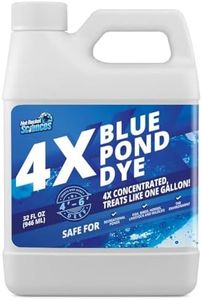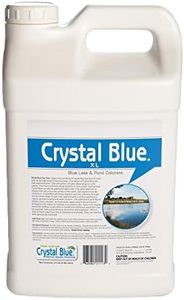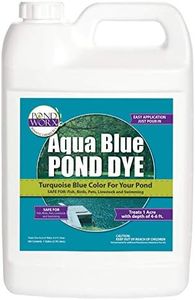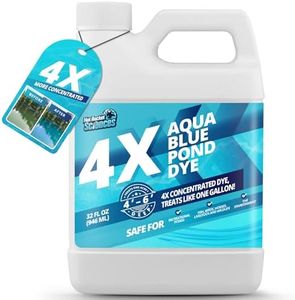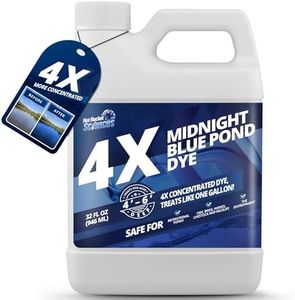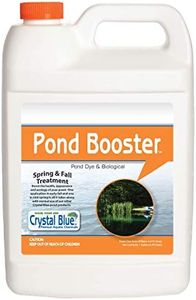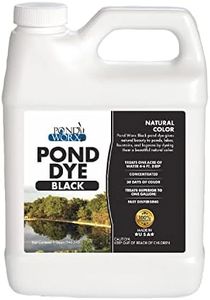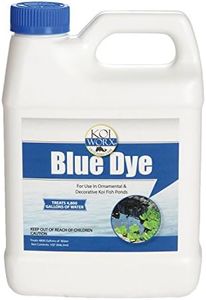We Use CookiesWe use cookies to enhance the security, performance,
functionality and for analytical and promotional activities. By continuing to browse this site you
are agreeing to our privacy policy
10 Best Pond Dyes
From leading brands and best sellers available on the web.Buying Guide for the Best Pond Dyes
Choosing the right pond dye is about more than just changing the color of your water. Pond dyes serve to beautify your pond but can also help control algae growth and protect the aquatic environment from excessive sunlight. To make the best choice, it's important to understand the key characteristics of pond dyes and how each can affect your pond’s health and appearance. By considering these main features, you can select a pond dye that fits both the look you want and the specific needs of your pond.Dye ColorDye color determines the visual effect in your pond and can also impact how much sunlight penetrates the water. The most common colors are blue, black, and shades in between. Blue dyes usually make water appear vibrant and clean, black dyes create a more natural look and can give water a reflective, mirror-like surface, while blends can offer a balance of benefits. Pick a color based on your personal taste and how well it integrates with the surrounding landscape. Additionally, darker dyes tend to reduce light penetration more, helping limit unwanted algae growth, so choose a shade depending on how much sun protection your pond needs.
Concentration and CoverageConcentration refers to how much dye is needed to treat a certain volume of water, often specified in ounces or packets per acre-foot of water. Highly concentrated dyes will treat larger ponds with smaller quantities, making them easier to handle and store. Lower concentration dyes may require more product for the same volume. To pick the right one, you should know the approximate size of your pond. If you want less frequent applications and easier storage, go for higher concentration. For small ponds or when you want fine control, a less concentrated option might suit you better.
Formulation (Liquid vs. Powder vs. Water-soluble Packets)Pond dyes come in liquid, powder, or water-soluble packet forms. Liquids are easy to pour and spread quickly in the water. Powders can be messier but might dissolve faster in moving water. Water-soluble packets are easy to toss in, and the dye disperses as the packet dissolves, reducing direct contact with the product. Choose a format based on convenience and your comfort handling the product. If you prefer quick and clean application, packets are a great option; for more precise control or if you want to mix, liquid or powder forms can be better.
Safety for Fish, Plants, and WildlifeMost pond dyes are formulated to be safe for fish, aquatic plants, pets, and wildlife, but there can be exceptions. Always check the label or description to ensure the dye you pick won’t harm your pond’s ecosystem. If your pond is used by pets or farm animals, it’s extra important to confirm non-toxicity. If you have a lot of sensitive plant or animal life in your pond, prioritize products specifically labeled as safe for all aquatic life.
Longevity and UV ResistanceLongevity refers to how long the dye’s effect will last in your pond before needing a reapplication, and UV resistance means how well the dye holds up under sunlight. Some dyes may fade quickly under strong sun or after heavy rain. If your pond is in a sunny, open area, look for dyes with added UV protection and longer-lasting formulas. If your pond is shaded, this may not be as critical. Think about how much maintenance you want: longer-lasting dyes mean fewer applications.
